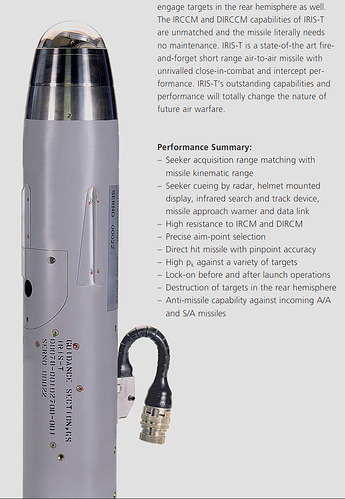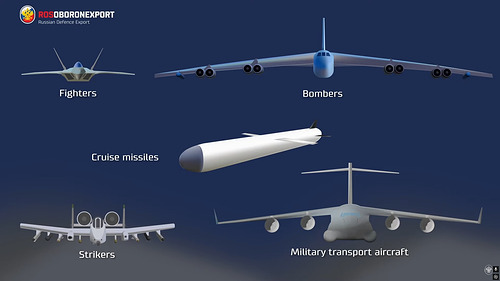This post was flagged by the community and is temporarily hidden.
This isn’t quite correct. Even 4.5 gen aircraft with mechanical radars can detect and track missiles reliably enough to shoot them down with counter missile fire.
The improvement made to JAS39C’s radar between 2014 and 2017 means that the distance it could detect enemy jet’s at in 2014 it can then in 2017 detect missiles at that same distance.

(https://web.archive.org/web/20200705231702/http://saab.com/globalassets/commercial/air/sensor-systems/fighter-radar/ps-05a/product_folder_ps-05-a-mk4.pdf)
Here is information about the IRIS-T being marketed as an “anti-missile missile” and to be able to shoot at other missiles you have to detect them first. It can even shoot down missiles coming behind the aircraft.
Just my gut feeling but this post looks and feels like AI, have you fact checked any of the claims the AI made? (apologies if it isn’t AI, it just very much reads like it)
Sorry, but that’s wrong and it’s not the reality
True, Ik some pesas like n035/irbis e on su-35 can provide MAWS warning for missiles with TTH >= 6 seconds and can attack them actually

most of it i wrote myself but i needed sources so the sources part is Ai everything else isnt
idk why you think radars can’t detect missiles practically, it’s actually advertised as a feature on many radars
There are even strategies to exhaust enemy defenses and missiles by sending missiles on BVR missions, simply to force the other side to use its missiles defensively. Some countries have small stockpiles, and thanks to this technique, within a week, they won’t have a single missile left without having lost a single one.
ik they can but in game is mostly off of speed rather than rcs
tws headon cant detect targets within like 9 km at all unless youre in acm, that blank spot is ALL deadzone

shooting down missiles with other missiles is definitely a real tactic, it’s actually one of the features of some modern missiles like iris t
r-77-1 advertisement has cruise missiles for example
and theres plenty of videos from the “special military operation in ukraine/russia” of missiles like r-27er or mica being used to shoot down missiles that i wont post because i aint risking a ban
Did you read the sources or did you just trust the AI?
Many times AI is wrong about things like this and VERY often search for sources that just confirms what you already believe instead of trying to prove you wrong even if you are. It’s actually becoming a real issue with AI just giving information that reconfirms the users beliefs instead of showing the truth. “people pleasing” within AI is going way to far way to often sadly.
this burn through range thing makes no sense. having high closing speed makes it much easier to detect, and that 2-5 miles range they give is very pessimistic
sometimes the deadzone dissapears for me
yeah i don’t understand that part, it also does that to me to sometimes and then it reappears, then it disappears. especially noticed it on aircraft like the f-14s
I’ve noticed on the topic of military vehicles AI also likes to use the Gaijin store and forums for sources. I’m not convinced the description of the latest premium they are selling is the most reliable source for real world information in it.
thats actually insane
And that’s with a mechanical radar from 8+ years ago. Just imagine what it can do today with an AESA antenna. x)
Same with MICA, and most modern NATO missiles.
Part of the role is self defense and that is modelled in game to a decent extent
Ai generates Ai sources, who’s shocked xD
A bit of topic but
It’s still insane to me that the IRIS-T is designed to shoot down missiles chasing the aircraft from behind. I’m guessing this means that it can not only be slaved to the radar but also the EWS/MAW/RWR somehow? or perhaps this is only possible via datalink targets?




